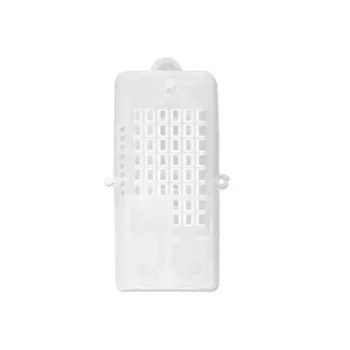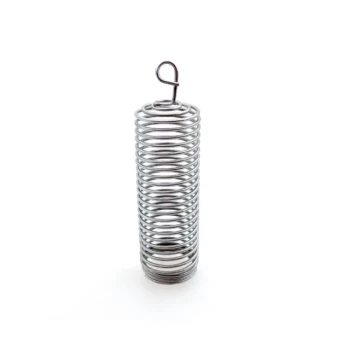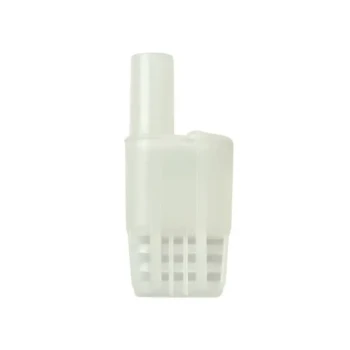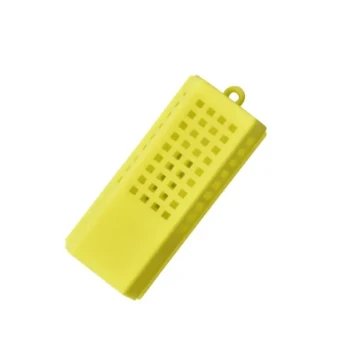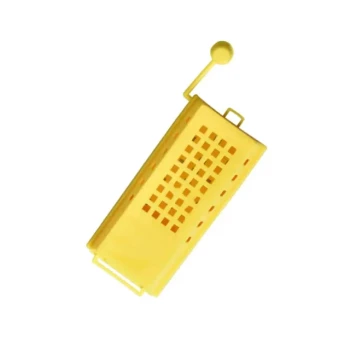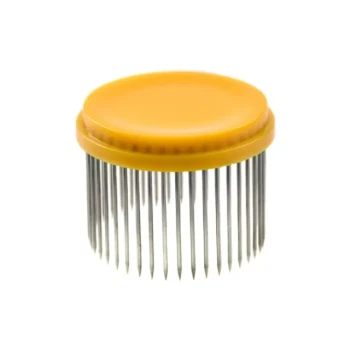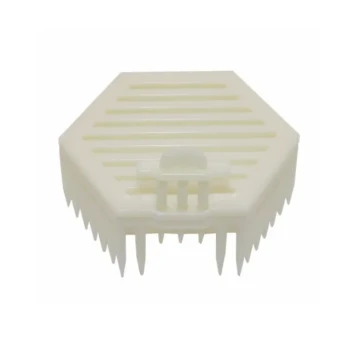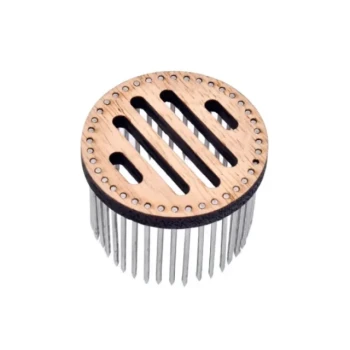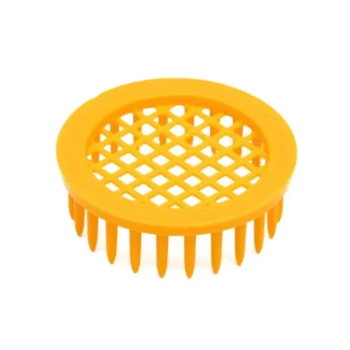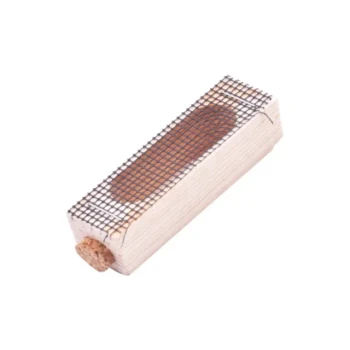To check if your queen has been released, you should wait two to three days after installation, then briefly inspect the hive. Look for an empty queen cage, typically with the candy plug eaten through, which is the primary sign that the worker bees have accepted and freed her.
The core task is not just confirming the queen's release, but verifying her acceptance by the colony. A released queen who is immediately killed is a failed introduction. Your observation must focus on the behavior of the worker bees and, ultimately, the presence of new eggs.
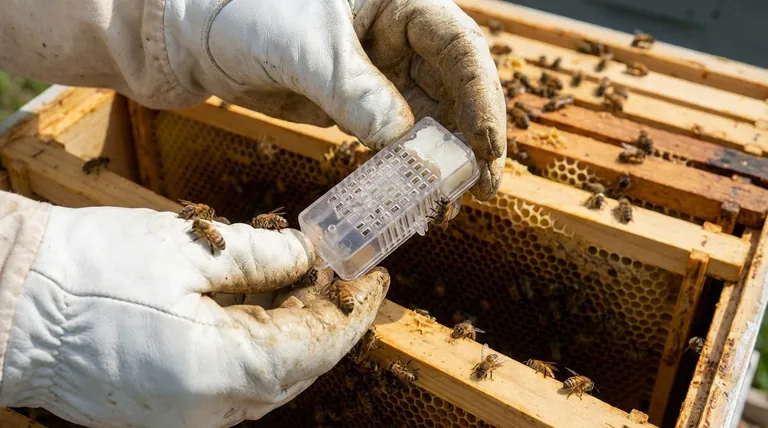
The Queen Check: A Step-by-Step Guide
When to Perform the First Check
Your first check should be minimal and focused. Wait at least two to three days after installing the package or nucleus colony.
Opening the hive too soon can disrupt the delicate process of acceptance, causing stress and potentially leading the bees to reject the new queen.
Step 1: Locate the Queen Cage
Carefully and calmly open the hive with minimal smoke. Locate the queen cage you installed between the frames.
The goal is to see an empty cage. If the candy plug at one end has been chewed away and the queen is gone, the bees have likely released her themselves. This is the ideal outcome.
Step 2: Observe the Colony's Demeanor
Pay close attention to the worker bees on the frame where the cage is located. A calm, orderly cluster of bees going about their business is a positive sign.
If the queen has been released, you can remove the empty cage from the hive.
What to Do If the Queen Is Still Caged
If after two or three days the queen is still inside her cage, you need to assess the situation before taking action. Do not release her immediately.
Assess Worker Bee Behavior: The 'Brush Test'
The behavior of the bees on the cage screen is your most important clue. Gently brush the bees away from the screen with your finger or a hive tool.
This is often called the 'brush test'. Their reaction tells you everything you need to know about their attitude toward the queen.
Interpreting the Results
If the bees move aside easily and seem unbothered, they are showing signs of acceptance. The candy is likely just hard, and they need more time.
If the bees cling aggressively to the cage, biting and attempting to sting it, they are rejecting her. Releasing her now would be a death sentence.
When Manual Release is Necessary
If the bees are calm but the queen is still not released after three to five days, you can intervene.
Manually release her by opening the cork or cap on the non-candy end of the cage. This allows her to walk out directly among the now-receptive bees.
Confirming True Acceptance: Beyond the Release
A successful release is only the first step. The true confirmation of a successful introduction comes later.
The Definitive Sign: A Brood Pattern
The ultimate proof of acceptance is seeing newly laid eggs. About one to two weeks after her release, you should be able to find frames with tiny, rice-like eggs, one per cell.
This confirms she has been accepted, has successfully mated (if she was a virgin queen), and is performing her primary function.
Long-Term Colony Health
Continue to monitor the hive for population growth and signs of disease or pests. A healthy, laying queen is the foundation of a thriving colony.
Making the Right Call for Your Hive
Your decision to intervene or wait should be based entirely on the bees' behavior, not just the calendar.
- If the queen is released within 3 days: Your job is done for now. Remove the empty cage, close the hive, and plan to check for eggs in another week.
- If the queen is still caged after 3 days but bees are calm: Wait another day or two. If she is still not out by day five, you can perform a manual release.
- If the queen is still caged and bees are aggressive: Do not release her. Close the hive and investigate why she is being rejected, as another queen may be present.
Trusting this process of observation and patience is the key to establishing a strong, productive colony.
Summary Table:
| Check Point | Timeline | Key Action | Positive Sign |
|---|---|---|---|
| Initial Release Check | 2-3 days post-installation | Inspect queen cage; perform 'brush test' | Empty cage with candy plug eaten; calm worker bees |
| Confirmation of Acceptance | 1-2 weeks post-release | Look for new brood | A solid pattern of newly laid eggs in cells |
| Troubleshooting | 3-5 days (if still caged) | Assess worker behavior | Bees are calm, allowing for potential manual release |
Ensure a Successful Start for Your Apiary with HONESTBEE
A strong, accepted queen is the cornerstone of every productive hive. At HONESTBEE, we supply commercial apiaries and beekeeping equipment distributors with the high-quality, reliable supplies needed for smooth queen introductions and thriving colonies.
From durable queen cages to essential hive tools, our wholesale-focused operations are designed to support your business's growth and efficiency.
Let's build stronger hives together. Contact our team today to discuss your supply needs.
Visual Guide
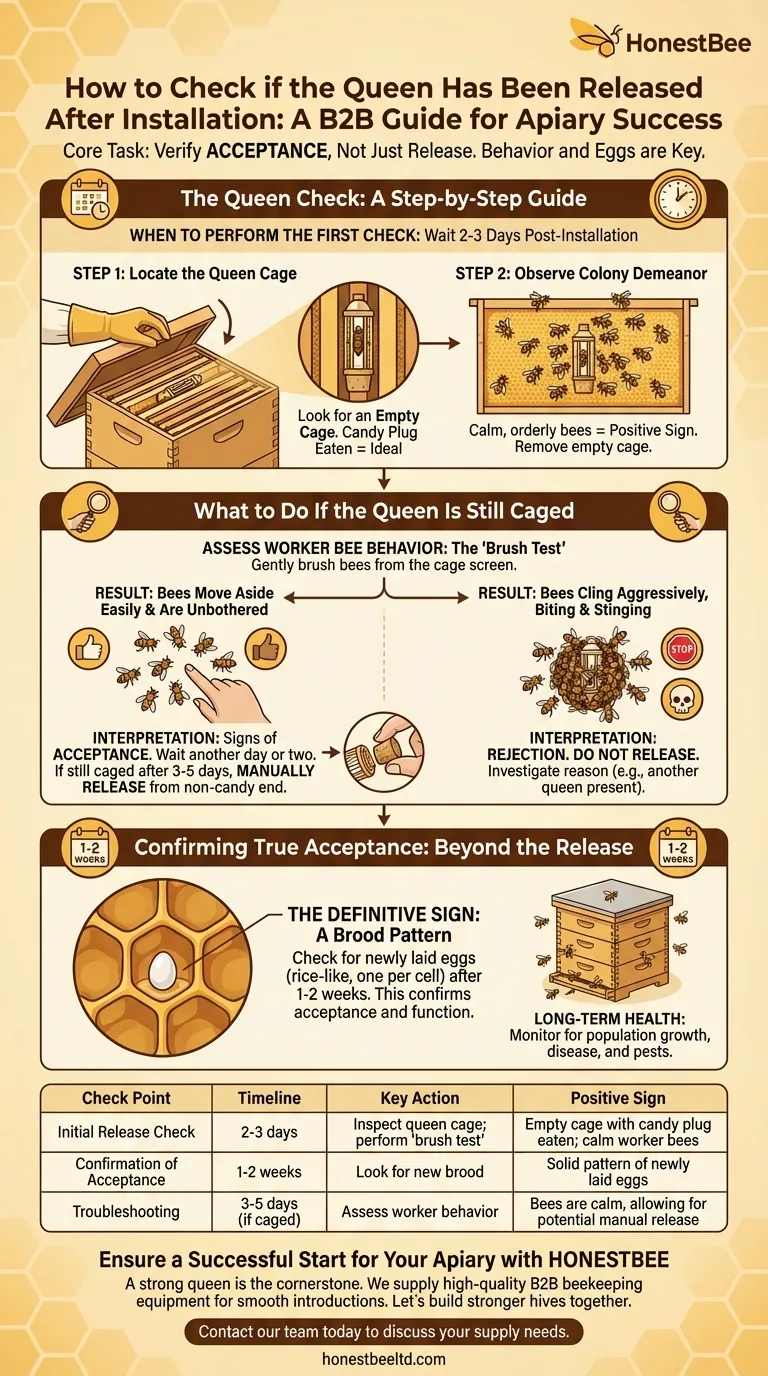
Related Products
- Professional Multi-Functional Queen Bee Cage
- Durable Galvanized Steel Spring Queen Bee Cage
- Multi-Function Queen Roller Cage and Catcher
- Professional Multi-Compartment Queen Cage with Sliding Lid
- Professional Queen Cage with Sliding Gate and Feeder Plug
People Also Ask
- What should be done before removing the queen cage from the hive? Ensure Your New Queen is Accepted & Laying
- How should a queen cage be maintained over time? Ensure Queen Introduction Success
- How long does it typically take bees to adjust to a new queen? Master the 2-7 Day Acceptance Window
- Why might bees reject a new queen? A Guide to Successful Queen Introduction
- What should be done if bees damage the queen cage or harm the queen? Rescue Your Queen and Save Your Hive
